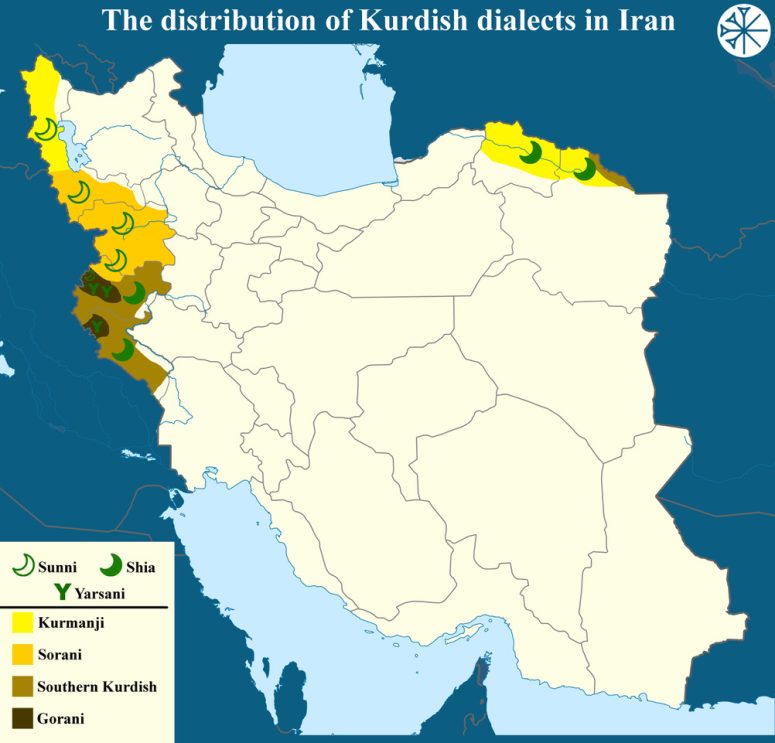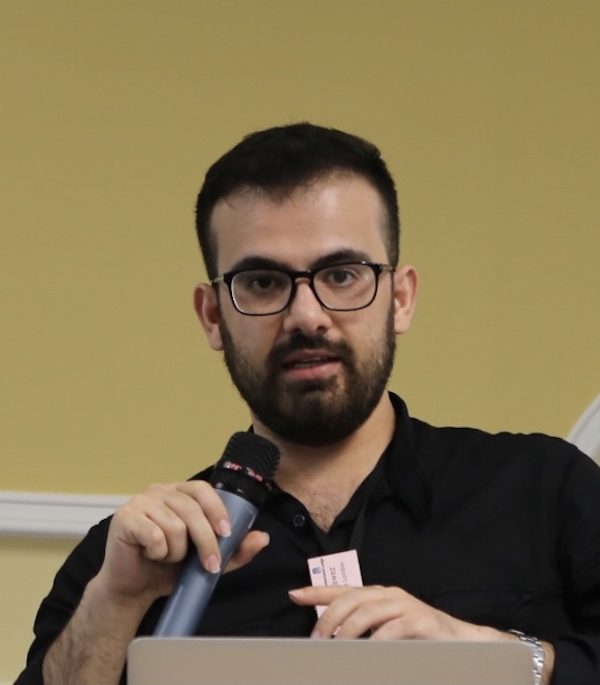
A New Strategy for Kurds as Changes Sweep Iran
Iranian Kurdistan has long been considered to be what Allan Hassaniyan calls the “ideological cradle for the emergence of Kurdish nationalism.” Therefore, it seems paradoxical that Iranian Kurds are almost nonexistent in international media coverage. Compared to their counterparts in the Kurdish regions of Syria, Iraq and Turkey, they now appear to lag behind in their sociopolitical activism.
Yet despite a lack of news-grabbing headlines, the Iranian Kurdish political movement is at a critical juncture. There is a rejuvenated sense of nationalism among the Kurdish populace—and notably also among Shia Kurds—driven by unprecedented economic woes and reacting to growing nationalism among Persians and Azeris in Iran. This is coupled with a growing debate among Iranian Kurdish activists and intellectuals about the future trajectory and discourse of Iran’s Kurdish movement.
What makes Iranian Kurdistan different?
The historical and socioeconomic reality of Iranian Kurdistan is markedly different from that of the three other parts of Kurdistan. An understanding of these differences is essential for informed discussions of and recommendations for the Iranian Kurdish movement’s aims and goals.
Unlike the Kurdish regions of Turkey, Iraq and Syria, which were once part of the Ottoman Empire, Iranian Kurdistan has consistently been ruled by Iranian rulers for at least 400 years. The Safavid Empire destroyed Kurdish principalities under its control much earlier than the Ottomans did and pushed for centralization and Shia religious dominance. Furthermore, most Iranian Kurds are Sunni Muslims, while most Iranians are Shia—which has made them a double minority, unlike Sunni Kurds in Sunni-majority Turkey, Iraq, and Syria. These two factors influenced the region’s socioeconomic and political diversions from Ottoman Kurdistan in important ways that remain relevant today.
While Iranian Kurds make up approximately 10% of Iran’s population, their religious, linguistic and social diversity has made unity difficult. Religiously, around 60% of Iranian Kurds are estimated to be Sunni, while around 35% percent are Shia and nearly 5% belong to the Yarsani minority. Linguistically, there is a similar divide among speakers of the Kurmanji, Sorani, Gorani and Feyli dialects of Kurdish.

Moreover, Iran’s Kurdish provinces are integrated into the Iranian state to varying degrees. According to the Human Development Index (HDI), among Iran’s 31 provinces, the majority-Shia Kurdish province of Ilam ranks in the top six, and Kermanshah, another Shia Kurdish province, is twelfth. Kurdistan Province and West Azerbaijan Province, which have significant Sunni Kurdish populations, are in the bottom five.
That is not to say the situation for Shia Kurds is good: in fact, Ilam and Kermanshah are among the provinces with the most youth unemployment, and the current economic crisis in Iran has hit these areas particularly hard. However, this development model is different from other countries in the region with Kurdish populations—especially Turkey, which has a similar imperial past. In Turkey, Kurdish provinces are more uniformly worse off.
Unlike Turkey, where there is a west-east divide in demographics, in Iran, the Persian core resides in central Iran, flanked by the Azeris, Kurds, Arabs, Turkmen, Lurs and Baluch closer to the borders of the country. Tehran, the most developed city in Iran, is located far closer to the Kurdish and Azeri cities in northwest Iran than to cities in the eastern and southern parts of the country, which makes the northwest better connected to Tehran.
A last important difference to consider is the fact that Iran’s borders have remained relatively unchanged for longer than those of Turkey. In many ways, Iran’s territory corresponds to that of the imperial period. This contrasts sharply with Turkey, which had a far more traumatic experience after World War I, so much so that a term has been coined to describe it: ‘Sèvres Syndrome’. This term refers to the long-enduring trauma shared by the post-Ottoman rulers and society in Turkey owing to the ‘divisive’ promises made by the triumphant Entente Powers to the Armenians and Kurds in the Treaty of Sèvres.
The Turkish rulers’ handling of the Kurdish question has been at least partially influenced by this post-World War I experience. While Iran briefly had such an experience when USSR-backed Azeri and Kurdish statelets attempted to break away in the 1940s, this was short-lived and appears less impactful.
Changing Sociopolitical Dynamics
Kurdish society in Iran is going through unprecedented changes, partially spurred by sociopolitical changes in wider Iranian society. Despite the aforementioned social mosaic, there appears to be a revitalized nationalist sentiment among all Kurds—noticeably among the Shia Kurds, who have been particularly targeted for assimilation by the Iranian state.
There are three key reasons for this. First, a similar nationalist fervor is spreading among other ethnic groups in the country, including Persians, Azeris and Arabs. This suggests that Shi’ism as a unifying force appears to have reached its limit. Second, economic woes fueled by sanctions, corruption and skyrocketing inflation have impacted Kurds deeply. And third, the Kurdish movement’s actions in other Kurdish regions, particularly developments in the war against ISIS in Syria and Iraq, have drawn considerable attention among Iranian Kurds.
A New Strategy
To capitalize on these changes and improve its position, the Kurdish movement in Iran needs to re-assess its discourse and strategy in light of these developments.
The most prominent Iranian Kurdish groups are the KDP, which is divided into the KDPI and the KDP–I; Komala, which is also divided into two; and PJAK, which is close to the PKK. Kurds in Iran have the advantage of possessing a much better organized political movement than other minorities do. However, they are also extremely politically divided. While the KDP and Komala have historically dominated the Kurdish political landscape in Iran, the PJAK has mounted a strong challenge to the traditional parties.
Furthermore, the core leadership of most of the above parties represents Sorani and Sunni areas, which make up less than half the Iranian Kurdish population. The exceptions may be the PJAK and the KDP–I, which also have support in the Sunni Kurmanji areas.
One major problem with many traditional Iranian Kurdish groups is that they are strongly influenced by Iraqi Kurdistan, likely because many members and leaders of these groups have been living there since the 1980s. However, both Kurdish society and ruling regimes in Iraq and Iran are drastically different. Taking unrealistic positions that are inapplicable to Iran based on experiences in Iraq has thus cost the Iranian Kurdish movement dearly.
In addition, the armed wings of Iran’s Kurdish groups have largely frozen their guerrilla warfare against Iran due to pressure from Iraqi Kurds, who have a complicated relationship with the Iranian regime. Ironically, the PJAK—which has close ties to the PKK and has also had a complicated relationship with Iran—has been the most active militarily.
If Iranian Kurds detach their politics from those of Iraqi Kurdistan, they would be able to operate more freely and realistically within Iran. This would also open up room for cooperation between the traditional Iranian Kurdish parties and PJAK. It is important to note here that all Iranian Kurdish groups, including the KDP and Komala, are on the left of the political spectrum—meaning there are likely areas for political alignment.
While renewed guerrilla warfare against the Iranian state is unfeasible for now, Iranian Kurdish groups should use a multi-front approach to gain further political and social influence.
First, at the local level, Kurdish parties should draw up a strategy to become more inclusive by embracing the different segments of Kurdish society and breaking from their traditional focus on Sunni Sorani areas. They could do this by bringing more Shias, Yarsanis, and members of other Kurdish communities into their leadership and building grassroots networks in the regions where these communities live.
Learning from the experience of Peoples’ Democratic Party (HDP) in Turkey could be a strong start. A strong ideology fused with Kurdish identity could become an attractive unifying factor and ensure that the Sunnis, Alevis, Kurmanjis and Zazas are all well represented in Iranian Kurdish politics, as they are in the HDP. While conditions in Iran do not allow for the kind of electoral organizing that the HDP carries out, its political approach to religious and ethnic diversity could be adapted to fit local realities.
Second, at the national level, Kurdish discourse should expand to address country-wide issues. As the most politically organized ethnic minority in Iran, Kurds should initiate cooperation with other minorities—such as Azeris, Arabs, Lurs and Baluchis—as ethno-political activism among these groups gains pace. This would also be a good opportunity to build a national front to work for systemic and transformative democratization: a goal that would benefit all of these communities. Almost half of Iran’s population is made up of non-Persian ethnic minorities. To date, the regime has employed a divide-and-conquer strategy to weaken the political power of these communities. Building such a cross-ethnic coalition could change the balance of power.
Finally, there is clear room for the Kurds to maneuver in the widening divide between the Persians and Azeris. The nationalist awakening among Azeris in Iran, especially after the 2020 conflict in Karabakh conflict between Azerbaijan and Armenia, has alarmed the regime. While the group has been an important pillar of power in Iran for centuries, it has increasingly prioritized its its Turkic identity by building political and cultural ties with Turkey and Azerbaijan. Given the Kurds’ close cultural affinity with Persians, they can take advantage of this to gain further influence in West Azerbaijan Province—which borders Turkey and has Kurdish and Azeri populations—as well as the wider region.




